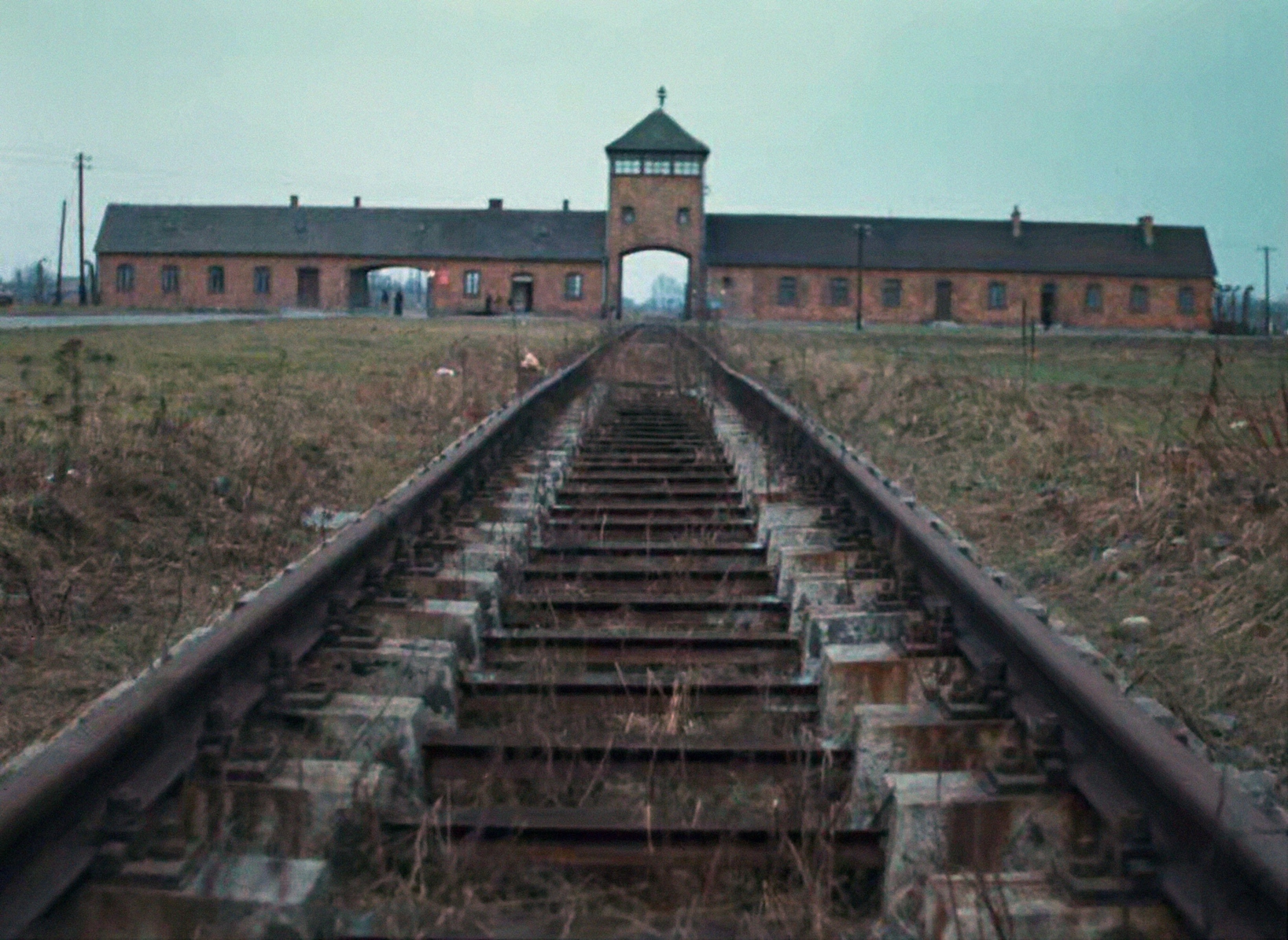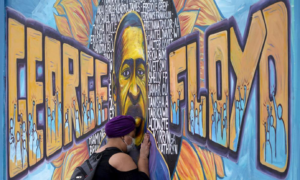Three new films attempt to address the Holocaust. But can cinema ever hope to adequately confront humanity’s darkest chapter?
Cinema has a troubled relationship with the Holocaust. It is repeatedly drawn to the subject, which seems to offer a shortcut to moral gravity, emotional depth and the highest possible stakes – elements every storyteller yearns for – and yet there is so much that can go wrong.
For one thing, the very act of depicting the horror of the Nazi murder of 6 million Jews risks minimising it. To pick one crude example, no matter how extreme a diet an actor might undertake, they can never resemble the Muselmänner, the walking skeletons who populated the death camps. Whatever can be shown on screen will always be less hellish than the reality.
There is the related, and natural, impulse to tell the stories of those who lived, rather than died, one reason why the best-known Holocaust film, the Oscar-winning Schindler’s List, has so many critics as well as admirers. In the words of Stanley Kubrick, who was prompted to abandon his own Shoah-themed project once Steven Spielberg’s film had landed, the 1993 film was not so much a story of genocide as a tale of success: “The Holocaust is about 6 million people who get killed,” Kubrick said. “Schindler’s List is about 600 who don’t.”
Yet any film that stays true to the essence of those events – that stares, unflinchingly, into the abyss – risks being unpalatable, or even unwatchable. That, coupled with the fear that interest in events 80 years ago would wane as the last survivors died and the Holocaust made its final journey from memory to history, led many to assume that cinema would steadily look elsewhere. But that assumption was wrong: on the contrary, the evidence of a new trio of films suggests cinema can hardly stay away.
Those movies could not be more different. They share a tacit belief that the Shoah remains humanity’s ultimate moral test case, one that reveals the extent of our capacity for evil and the resonance and relevance of which only increases the further away it gets. Besides that, each film finds its own way to wrestle with – or avoid – the quandaries inherent in putting the Holocaust on screen.
The most conventional effort is One Life, directed by James Hawes and starring Anthony Hopkins as Nicholas Winton, the London stockbroker who, with his mother, played by Helena Bonham Carter, and a small band of others, mounted an unofficial rescue effort that would bring 669 children, most of them Jewish, from Prague to Britain. By focusing on the period just before the outbreak of war, with Johnny Flynn as young Winton, and on Winton’s restless retirement many decades later, the film bypasses the problem of depiction. There is no Auschwitz in this film, nor gas chambers. They exist only in the imagination of the audience and in Winton himself, as he reflects on the fate of those children he could not bring to safety.
That is one of several echoes of Schindler’s List. Both films are concerned with rescuers; heroes who, in both cases, did not praise themselves for the lives they saved, but rather were haunted by those they did not. “I could’ve got more out … I didn’t do enough,” Liam Neeson’s Schindler says in the closing minutes of Spielberg’s film. Likewise, the older Winton is shown obsessively turning the pages of a photo album, staring at the faces of those who were left behind.
Like Schindler’s List, One Life delivers a properly tearful ending. Spielberg closed his film with real-life footage of those who survived thanks to Schindler, along with their descendants. The climax of One Life is a re-enactment of the 1988 episode of BBC TV’s That’s Life! when Esther Rantzen stunned an unwarned Winton by inviting all those sitting with him in the studio audience to stand up if they owed him their life. The film is essentially the backstory to that hugely moving moment. As Kubrick intuited, perhaps the only watchable Holocaust film is one that allows us to look away from the dead and gaze instead, with gratitude and admiration, at the few who lived and those who helped them.
This brings us to a curious but noticeable absence in many films about the Shoah. Put baldly, what is missing is Jews – or rather Jews who are active, rather than passive; who have agency and exist in three dimensions; who are not simply victims waiting to be rescued by a non-Jewish saviour. One Life is careful to explain that the Winton family tree had Jewish roots – even if Winton himself does not identify as Jewish – and there is a scene with a rabbi. But otherwise the children are mostly presented as generic European refugees from Adolf Hitler, with little explanation of exactly why they – and their parents, whom Britain refuses to take in – are not safe staying in Czechoslovakia. The trailer for the film does not say the J-word at all.
This might be because, as with much Shoah commemoration, the impulse is to cast the Holocaust as an instance of a universal phenomenon – man’s inhumanity to man – rather than a specific attempt, rooted in centuries of antisemitism, to eradicate Jews from the face of the Earth. But it might also owe something to a long-established Hollywood awkwardness around Jewish stories – an awkwardness no less sharp for originating often with Jews themselves, writers and producers anxious to appeal to a mainstream audience. (Witness the Jewish NBC executive who said the pilot episode of Seinfeld was “too New York, too Jewish” before gingerly commissioning an unusually short first run.)
An absence of Jews is central – and wholly intended – in the most unsettling of these new Shoah-related films: Jonathan Glazer’s The Zone of Interest. Adapted from Martin Amis’s novel, the film shows us the domestic life of the family of Rudolf Höss, the commandant of Auschwitz. Picnics with guests, kitchen staff preparing food, pillow talk between husband and wife; it’s all there, with little in the way of narrative propulsion. What makes it compelling is that which is glimpsed – seen only on the edge of the frame, in the film’s peripheral vision (the acclaimed Son of Saul took a similar approach). For the Höss family live within the precincts of history’s most notorious death camp. Auschwitz is just over the garden wall.
Often what we are looking at is quite unremarkable. Chitchat between Frau Höss and the other SS wives; the children playing; Höss taking his beloved horse out for a canter, unwinding after an especially hard day at work. But it’s the sounds that stay with you, including, most persistently, a deep rumbling noise, as if from the bowels of the Earth – as if the trapdoor to hell had been opened. That satanic murmur, punctuated by shots, cries and the rattle of arriving trains, is mere background noise to the Höss family and their visitors. But to the audience and its imagination, it’s the sound of ovens and furnaces and human agony.
We hear, too, the sound of flogging, a favourite punishment of the masters of Auschwitz, and also birdsong, a rebuke to those who imagine that even the skies were stilled at the happenings below. The Zone of Interest suggests people are able to live inches away from horror and not only get used to it, but carve out lives of serenity, beauty, laughter and fun – the children have a small swimming pool – in its shadow. When her husband tells her that he is to be transferred, Frau Höss is furious: for her, Auschwitz is everything they ever dreamed of, their own little piece of heaven – a big house with grounds and a staff – and she refuses to give it up.
We see so little, but picture so much. It might be an occasional prisoner from the camp, in a striped uniform, pushing a wheelbarrow or delivering a package to the commandant’s residence. It might be the sight of one of Birkenau’s chimneys, expelling intermittent balls of fire and a regular output of choking black smoke. It might be the ash, raked into the soil of the Höss’ pretty garden – fertilising it, feeding it. Or it might be the distribution of women’s clothes by the lady of the house to her female servants, keeping a fine fur coat for herself, trying out the lipstick she finds in the pocket. No one says out loud where these items came from, who had worn them before. But they all know. And we know.
Nervous about 2024? We can help.
We’re preparing for one of the most consequential news cycles of our lifetimes. Support independent journalism by helping us reach our $1.5m goal.
There is no denial, but rather a willed detachment. It relies on euphemism, often of the thinnest kind. We see a meeting between Höss and fellow officials, including a designer who assures him that a circular burn chamber will do the job more efficiently: “Burn, cool, unload, reload, continuously!” There is no need to say what is to be burned – or rather who.
Today’s world intrudes unexpectedly towards the end, with footage of Auschwitz as it is now, with a team of cleaners quietly polishing floors or wiping the glass on display cabinets in what has become a museum. It is a reminder that Auschwitz exists in our present, too.
Those brief sequences could sit easily in the third film, Occupied City, a documentary by Steve McQueen. Based on a book by McQueen’s wife, Bianca Stigter, Atlas of an Occupied City: Amsterdam 1940-1945, the film runs to four hours and 22 minutes. The camera lingers on the houses, streets and faces of Amsterdam as it is today, while an unseen narrator relates what happened in this apartment or that building in the era of Nazi occupation.
It shares the same radical response to the challenge of putting the Holocaust on screen adopted by Claude Lanzmann in his masterpiece Shoah, the nine-and-a-half-hour epic that, like Occupied City, included no archive footage from the Nazi era. Instead, that film sought to show that the Holocaust lived on in our world, chiefly by interviewing witnesses, survivors and even perpetrators who still lived, breathed and walked among us.
There are no interviews in Occupied City. Instead, where Lanzmann had people, McQueen has buildings and bridges, parks and frozen canals. And a voiceover that informs us that each of these places has a past that can shock, terrify or inspire.
It is the cinematic equivalent of the Stolpersteine, the “stumbling stones” embedded into the pavements of German streets, reminding those who walk by of the people who once lived on that spot. The camera takes us to the places where Jews once hid, where Nazi collaborators gathered, where resistance activists conspired.
We see the red light district and the front door behind which a Jewish sex worker was charged with having had “carnal intercourse with Aryan persons”. We see the concert hall, where the music of Jewish composers was banned and the inscribed names of Mendelssohn and Mahler were covered up by cloth. We see the home of a master forger, who could produce a Brazilian birth certificate even though he had never seen one. We see the building where a four-month-old baby was left abandoned, by Jewish parents who thought the child would be safer picked up by strangers than tied to a mother and father forced to wear the yellow star.
We see the park where trees were chopped down for firewood during the Dutch famine of 1944–45, known as “the hunger winter”; the hospital where Jewish women were forcibly sterilised; the home where a family of six Jewish refugees from Germany gassed themselves, their housemaid joining them. We learn that suicide was frequent. One man left a note to his neighbours: “Take what you like.”
In these stories, in an unexpected contrast with the other two films, Jews are the main characters. And the stories keep coming, dozens of them, the effect mesmerising. As with Lanzmann’s Shoah, the length of McQueen’s film is the point: the Holocaust is an event the retelling of which could take till the end of time. All the while, what we actually see on screen is a city of people chatting in cafes; a man practising the guitar in his living room; kids in a school cafeteria; a couple watching TV; a man stroking a cat; the Dutch prime minister on a TV set attached to the wall of a kebab shop, announcing a new lockdown (Covid struck when filming began). The surface is our world; what lies beneath is the Shoah.
The collision of past and present is constantly jarring. A camp for Nazi prisoners is now a retirement home. Where once Dutch Nazi volunteer drivers gathered, today teenagers practise ballet. Where the deportation of Amsterdam’s Jews was organised, now there are kids in backpacks wearing AirPods.
It shows even less than The Zone of Interest; it lets our imagination do the work. It invites us to consider how quickly nature and human progress conspire to cover up the traces of our crimes and how easily they can be forgotten – unless there is a determination to remember, a determination shared by McQueen and Stigter and, to their credit, the makers of One Life and The Zone of Interest.
But there is another unexpectedly hopeful message, too, implicit in all three of these films, but read most clearly in the faces of the people skating and sledging on the Amsterdam ice in Occupied City. It is that even the deepest darkness passes eventually; that an easier era can take its place and that, for all the torments of the present, it is better than that particular past. We are lucky to live now, not then – even if we sometimes struggle to see it.
• One Life is out on 5 January, The Zone of Interest on 2 February and Occupied City on 9 February




